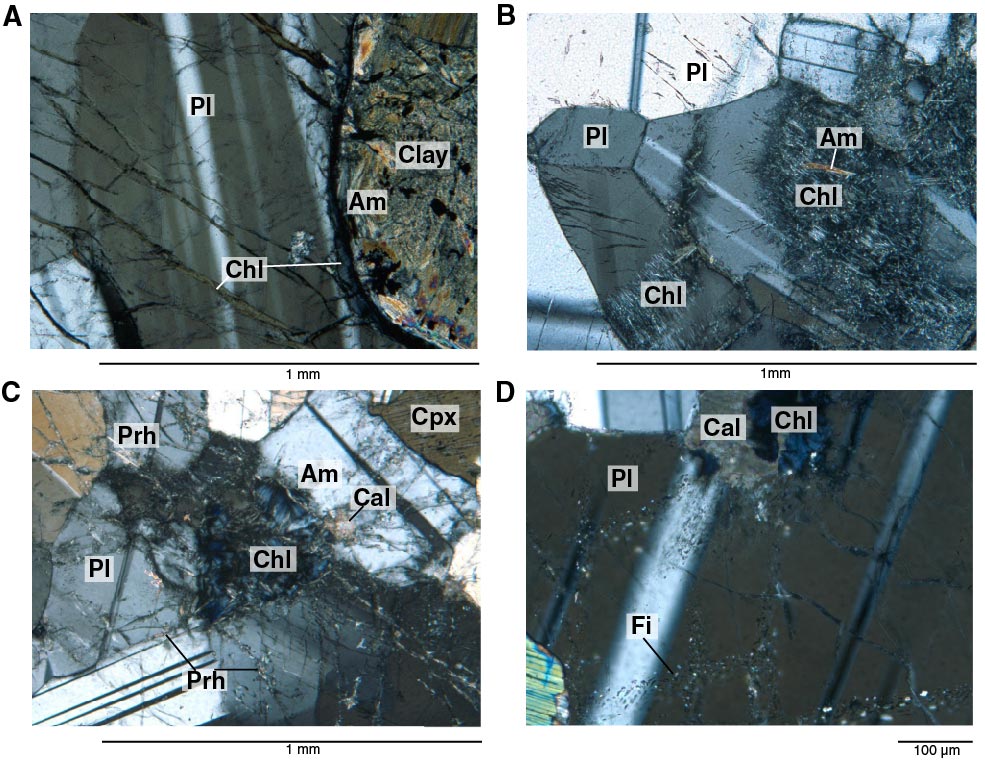
Figure F45. Typical plagioclase (Pl) alteration (under crossed polars). A. Simple chlorite (Chl) veins cutting plagioclase adjacent to olivine in gabbro. Chlorite forms a rim around relict olivine that is replaced by clay minerals ± talc and amphibole (Am) (Thin Section 29; Sample 345-U1415J-3R-1, 11–13 cm [Piece 4]). B. Diffuse amphibole and chlorite replacement veins in plagioclase. Note high-temperature (hypersolidus) annealed texture of plagioclase in clinopyroxene (Cpx) oikocryst-bearing gabbro (Thin Section 42; Sample 345-U1415J-7G-1, 91–94 cm [Piece 14]). C, D. Thin Section 39 (Sample 345-U1415J-5R-2, 60–63 cm [Piece 3]). (C) Irregular patch of chlorite + amphibole after plagioclase at grain boundary. Carbonate (likely calcite [Cal]) is present as a secondary phase, as well as small prehnite (Prh) veins in olivine-bearing gabbro. (D) Fluid inclusion (Fi) trails within plagioclase radiate from a chlorite-carbonate patch and presumably represent healed cracks following fracturing in olivine-bearing gabbro.

Previous | Close | Next | Top of page